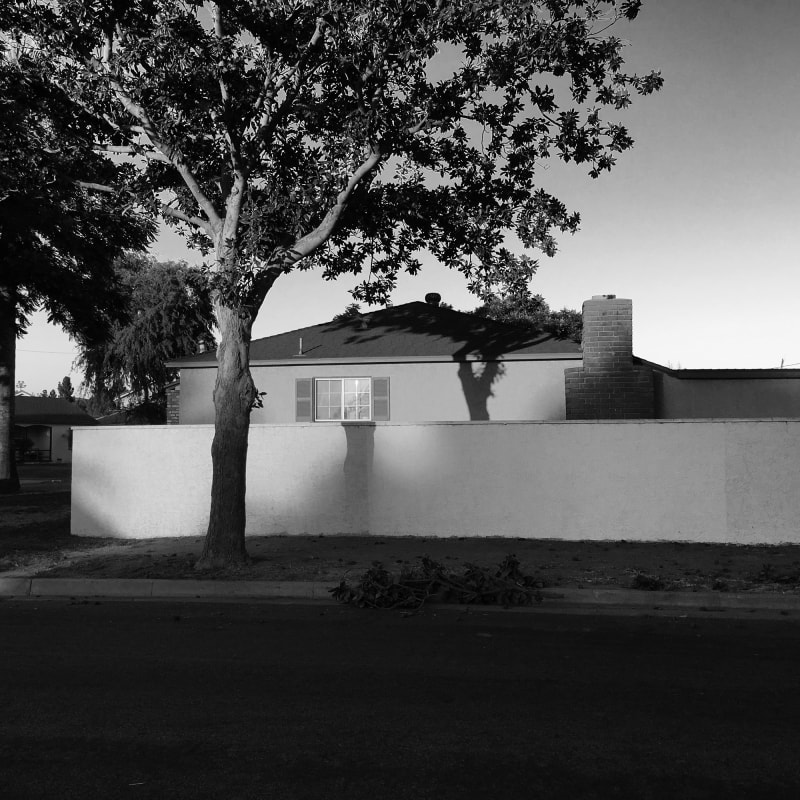Diana Matar (born California, USA) uses photography, testimony and archive to investigate themes of history, memory and state sponsored violence. Often spending years on a subject, she attempts to capture the invisible traces of human history. She is concerned with power and violence and the question of what role aesthetics might play in their depiction. Her work is conscious of the past and is the result of a rigorous enquiry into the possibility that a contemporary image might contain memory. Time is an integral element in the making of her work, both in the sense that her photographs are often taken at night, where film is subjected to long exposure times, but also in that her work arises from a cultivated patience that is attentive to the resonance of a particular place.
Diana Matar's series My America is an archive of and memorial to victims of encounters with police in the US. The photographs, taken at locations where citizens were shot or tasered by law enforcement officers, create a chilling critique of the contemporary United States. The black and white photographs are of city parks, shopping malls, parking lots, mobile homes, empty fields and roadside highways. By photographing these banal landscapes Matar declares that what has happened at the locations matters and questions the link between landscape and memory.
In Tête-à-tête , 2019, a series of black and white photographs made during a residency at the Museo Archeologico Nazionale di Napoli, Matar focused on the collection of Roman portrait sculpture. 'Through the lens I saw personalities displaying unique psychologies and imperfections: individuals with scars, physical deformities, emotional complexities and vulnerabilities. I saw the man on the street corner, the woman in the shop, the boy who had left his family to cross the sea. Face to face, these ancient and animated human likenesses seemed poignant and of our time. The longer I spent with the collection, the more I found that, even though the sculptures were made of stone, they were alive and dynamic; that if one attended to them, they responded'. (Diana Matar)
The series Evidence, 2012, presents landscapes and architectural spaces where human rights violations took place during both the Gaddafi dictatorship and the ensuing Libyan civil war. Her colour landscapes, Still Far Away, 2012, focus on post revolutionary Libya and the silent resonance of its dictatorial and colonial past. Her earlier series, Disappearance, 2008, is a series of works that uses the enforced disappearance of the artist's father-in-law as an anchor. Jaballa Matar, a Libyan political dissident, was kidnapped in 1990 and not seen by his family again. For six years Diana Matar scanned through places in search of traces of her father-in-law, first in Egypt and Italy, where anti-Gaddafi dissidents were active and later in post revolutionary Libya. Though her work is about Jaballa Matar, he is nowhere to be found in any of the photographs.
A major installation of the series Evidence was shown in the exhibition Conflict, Time, Photography at Tate Modern, travelling to Museum Folkswang, Essen and Staatliche Kunstsammlungen, Dresden, 2014 - 2015. Her first monograph, Evidence, was published in 2014 by Schilt Publishing, Amsterdam and was chosen by New York Times Photography Critic as best book of the year. My America was exhibited at the Musée de la Photographie Charleroi, Belgium in 2020. Evidence and The Return: An Intervention by Diana Matar and Hisham Matar was exhibited in 2022 in the Albukhary Foundation Gallery of the Islamic World, British Museum..
Diana Matar’s work is held in many public collections including: Victoria and Albert Museum, London; Imperial War Museum, London; The Museum of Fine Arts, Houston; The Museum of Contemporary Photography, Chicago; George Eastman Museum, New York and the Santa Barbara Museum of Art. My America published by GOST Books, April 2024, and shortlisted for the Rencontres - Arles Photo-Text Book Award 2024.
